The iPhone 6 Review
by Joshua Ho, Brandon Chester, Chris Heinonen & Ryan Smith on September 30, 2014 8:01 AM EST- Posted in
- Smartphones
- Apple
- Mobile
- iPhone 6
GPU Performance
While we don't quite have real games to benchmark against, we do have benchmarks that are reasonably good approximations of games, which heavily stress the GPU. For the most part, this means that we can see the performance of the A8's PowerVR GX6450 GPU but there are some aspects that are CPU-bound, which we'll discuss after the results.
Edit: Before I get into the results, I must caution that Basemark X will have inaccurate on-screen results as the benchmark was made using XCode 5.x in order to keep scores comparable between versions 1.1 and 1.1.1. This doesn't affect the overall score, which is solely calculated based upon off-screen performance.
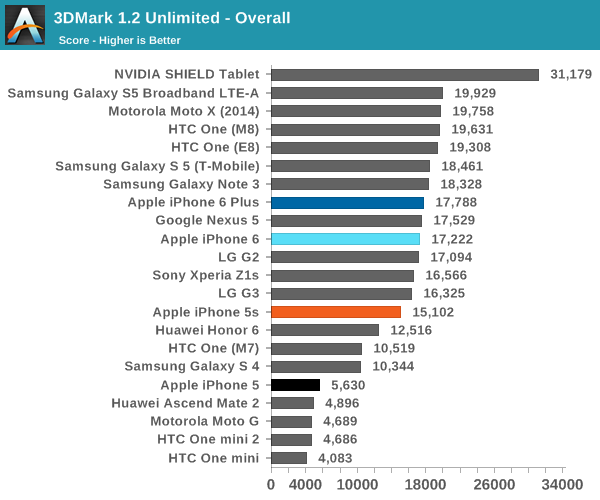
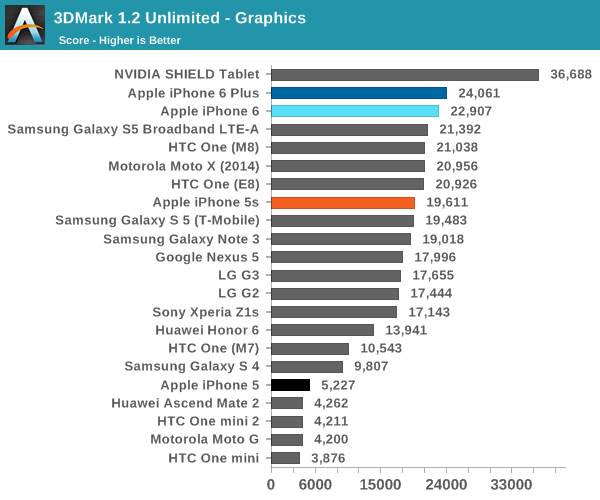
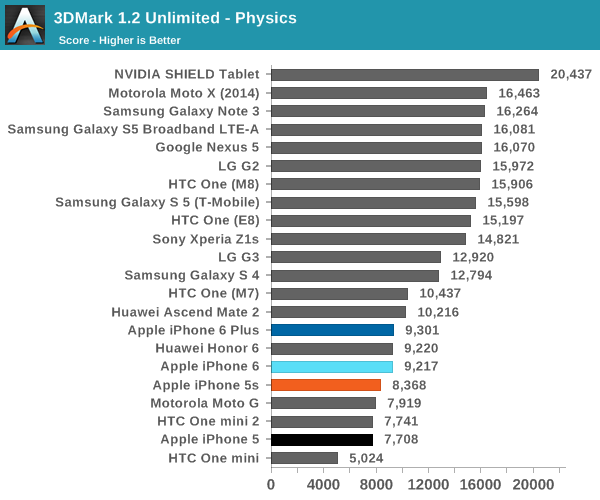
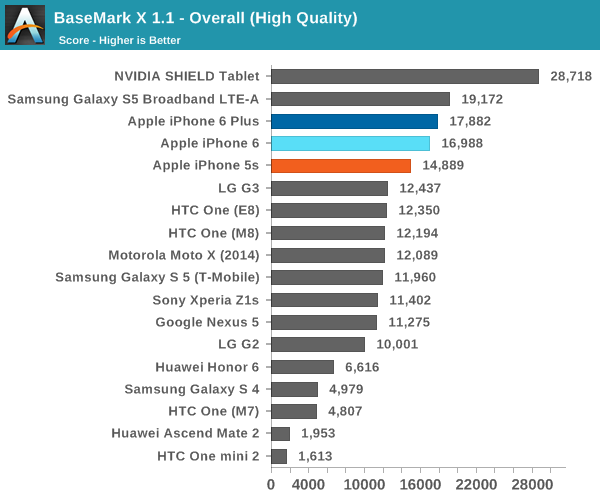

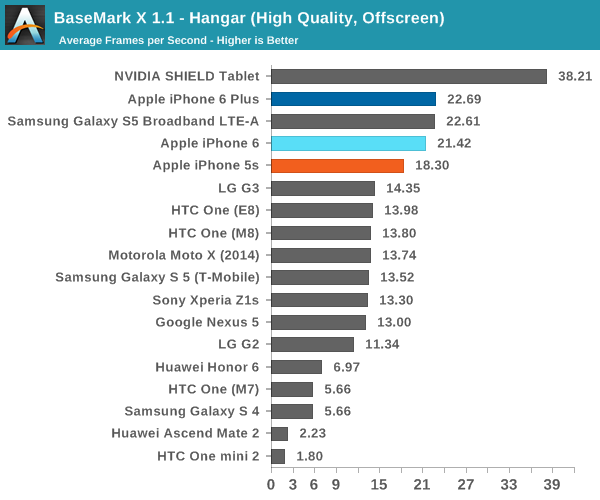

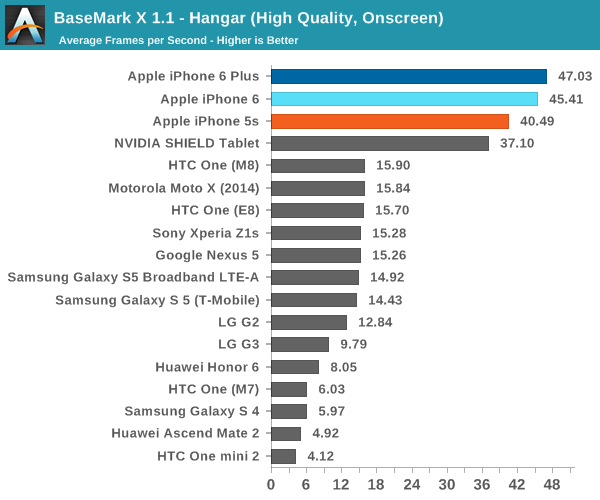
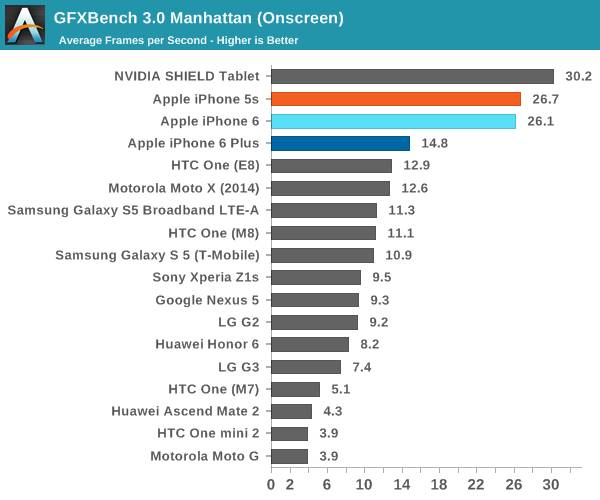


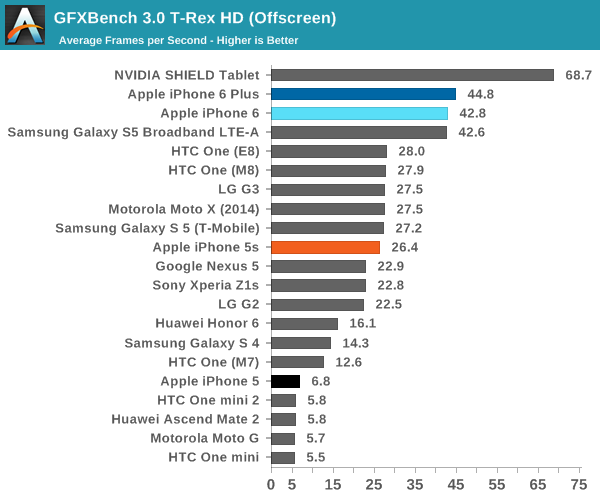
For the most part, we see that the GX6450 is at about the same level as Qualcomm's Adreno 420, which seems to track closely to expectations given that the A7's GPU was around the same performance as the Adreno 330. The 3DMark test does have an interesting result, but it seems that this is because 3DMark's physics test has a strong amount of data dependency that restricts the level of out of order execution that can be done. NVIDIA's Tegra K1 is the current leader in graphics performance, but of course it's also in a tablet instead of a smartphone so it's not a direct competitor.
NAND Performance
As we move towards the goal of seamless performance in everyday tasks, one significant factor is IO performance. While there's definitely a minimum level of performance that allows for generally acceptable smoothness, there's value in having higher storage performance (e.g. prevent bottlenecking in situations such as updating apps in the background). In order to test this, we use Androbench with some custom settings on Android and a custom utility developed by Eric Patno for iOS, who has been quite helpful with furthering our efforts to test storage performance.
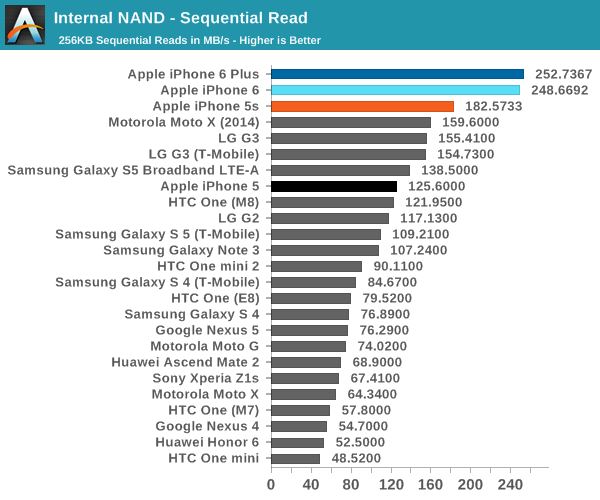
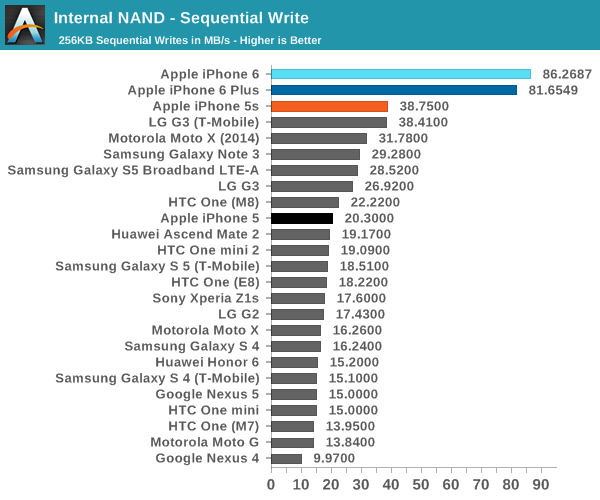
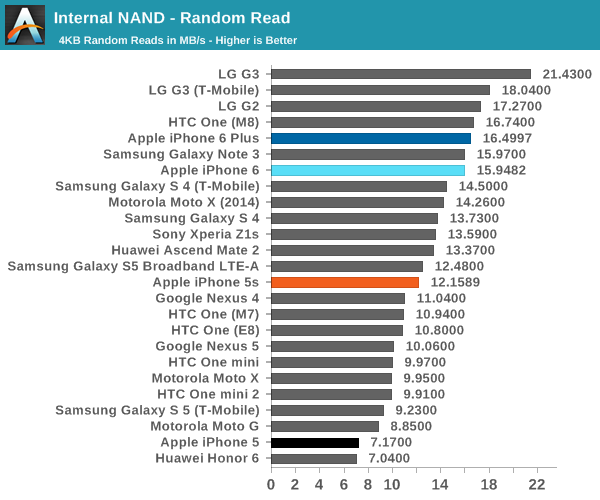
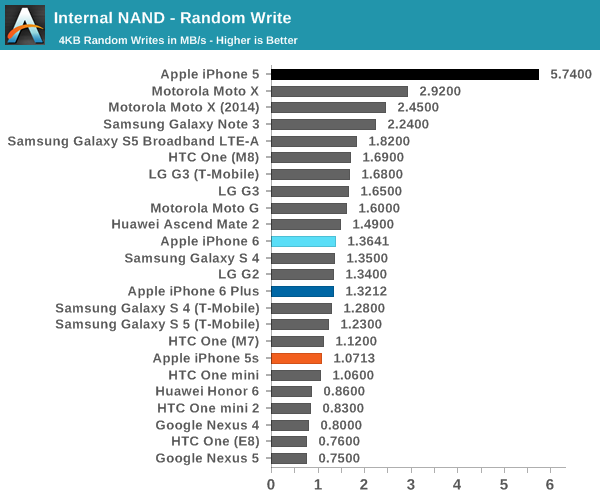
As this is the first time that we've looked into NAND performance on iOS devices, it's definitely worth scrutinizing the data a bit more closely than in most cases. There are a few notable cases here, which are the class-leading speeds for sequential reads and writes on the iPhone 6, but also the rather middling random read and write speeds for the iPhone 6 and 5s. The oddest result is definitely the iPhone 5, which is Ryan's personal unit and while the random read speeds are on the low side, random write speeds are easily record-setting.
In practice, with tablets and smartphones being less multitasking heavy than PCs/laptops, the sequential scores are probably slightly more relevant to the overall user experience. The iPhone 6 results show a significant increase in performance over the iPhone 5s in all of the tests, which is always good to see.










531 Comments
View All Comments
RyanBeta - Wednesday, October 1, 2014 - link
A lot was made of the glass in the run up to this launch but I see no comment about it in the article.I am specifically looking to see if it has changed or information on the materials used over the years. When the original iPhone came out it seemed like they kept with the same glass material through 4s.
As someone who does not use a protective cover and treats my phone well it is frustrating to see the copious amount of minor scratches that have built up on the glass of my 5s in the past year or so. It has probably a hundred or so minor scratches vs the 5 or so scratches I could see on my 4s when I turned it in after 2 years.
ELPCU - Wednesday, October 1, 2014 - link
u kidding me? Yes, RAM has power cost: TINY power cost.That's the worst excuse EVER.
power consumption of RAM is way less than that of display or GPU.
uhuznaa - Wednesday, October 1, 2014 - link
Yeah, but when the display is off and the GPU in deep sleep (like when you don't actively use the phone), RAM still needs to be powered and this can become a major part of standby power draw then. I would like to see standby power usage actually tested though. My old iPhone 4 drains about 10% battery per 24h in standby, which certainly helps with having some battery left when you actually start using it during the day.zhenya00 - Wednesday, October 1, 2014 - link
Then you haven't done the calculations. If your ram draws even 5mA when idle (probably in the ballpark, but we don't really know - this study from 2010 indicates that the 128MB of mobile ram in the test device used ~1mA, 8x that much certainly uses more https://www.ssrg.nicta.com.au/publications/papers/... then the RAM alone will drain the 1810mAh battery of the iPhone 6 in 15 days. If increasing the RAM to 2GB increases that power consumption just 50% to 7.5mA, you lose 5 days of standby time! If it doubles to 10mA, you lose half your standby life, and now RAM alone will drain the battery in 7.5 days.RAM power consumption is important because it is powered 100% of the time so even tiny increases in power consumption have a large effect on the overall battery life of the device.
ELPCU - Wednesday, October 1, 2014 - link
Before reading review, I already started to read comment and it's soo fun to watch everyone arguing whether apple sucks or rocks.TheSlamma - Wednesday, October 1, 2014 - link
it's not fun, it's patheticmjh483 - Wednesday, October 1, 2014 - link
Solid review from Anandtech as always. Would you please elaborate on why you aren't willing to use iPhone 6 as your everyday phone?Torakaru - Wednesday, October 1, 2014 - link
Hello,I really liked so much your iPhone6 & 6+ reviews, but I found something interesting in your comment nowhere else found and for which I would like to have a deeper knowledge experience sharing from your side. Basically you said:
"The only flaw that the iPhone 6 has is a lack of RAM, and this is only an issue if you also felt it was an issue on the iPhone 5s."
I find it very interesting because I have being reading plenty of reviews of the new iPhone6/6+ and you are the first ones to mention it. I think that you are right, but I have an iPhone4, so I dont know. Could you be so kind to be more precise about that feeling that you have? It is due lack of RAM for multitasking, or also for single tasks?
Thanks a lot in advance guys!!!
Torakaru - Wednesday, October 1, 2014 - link
By the way guys, if any of all of you have the iPhone5/5S or the iPhone6/6+ already and want to share also your experience regarding the possible lack of RAM (noticeable) in your daily use, please comment. Thanks! ;-)dmacfour - Wednesday, October 1, 2014 - link
Switched from a Galaxy, didn't notice a thing.